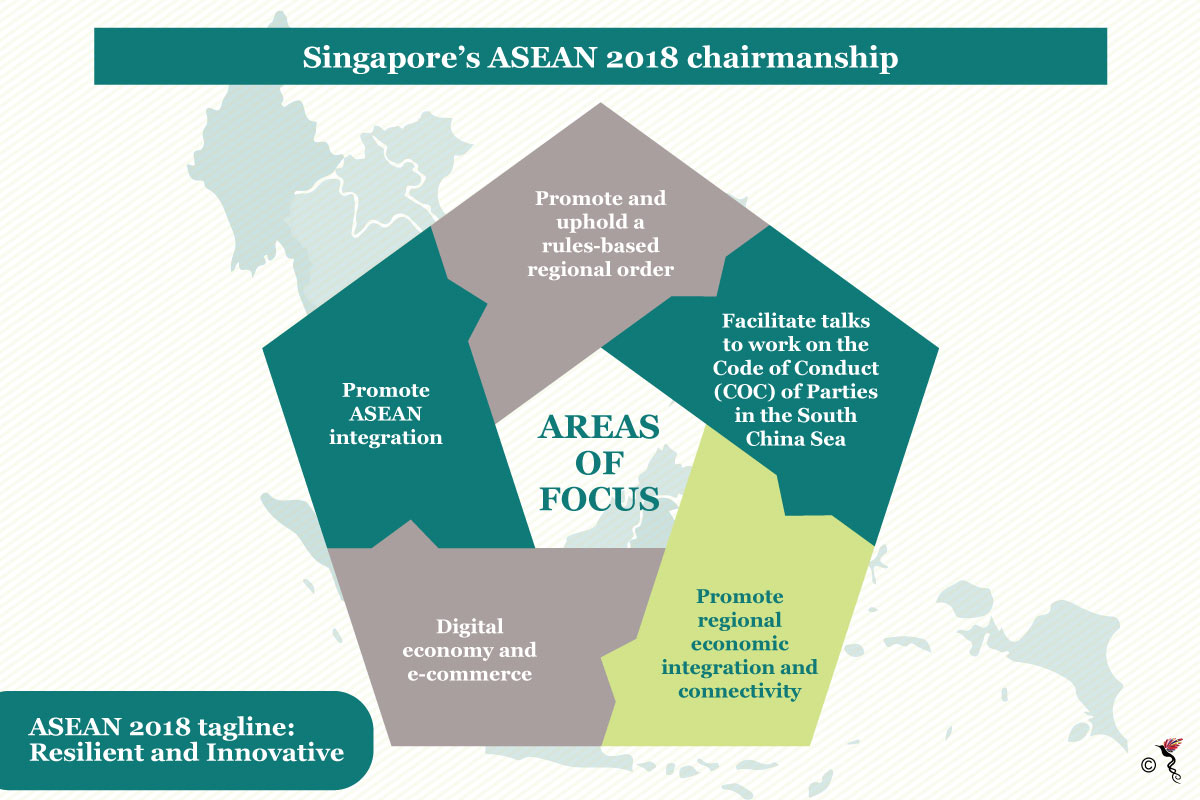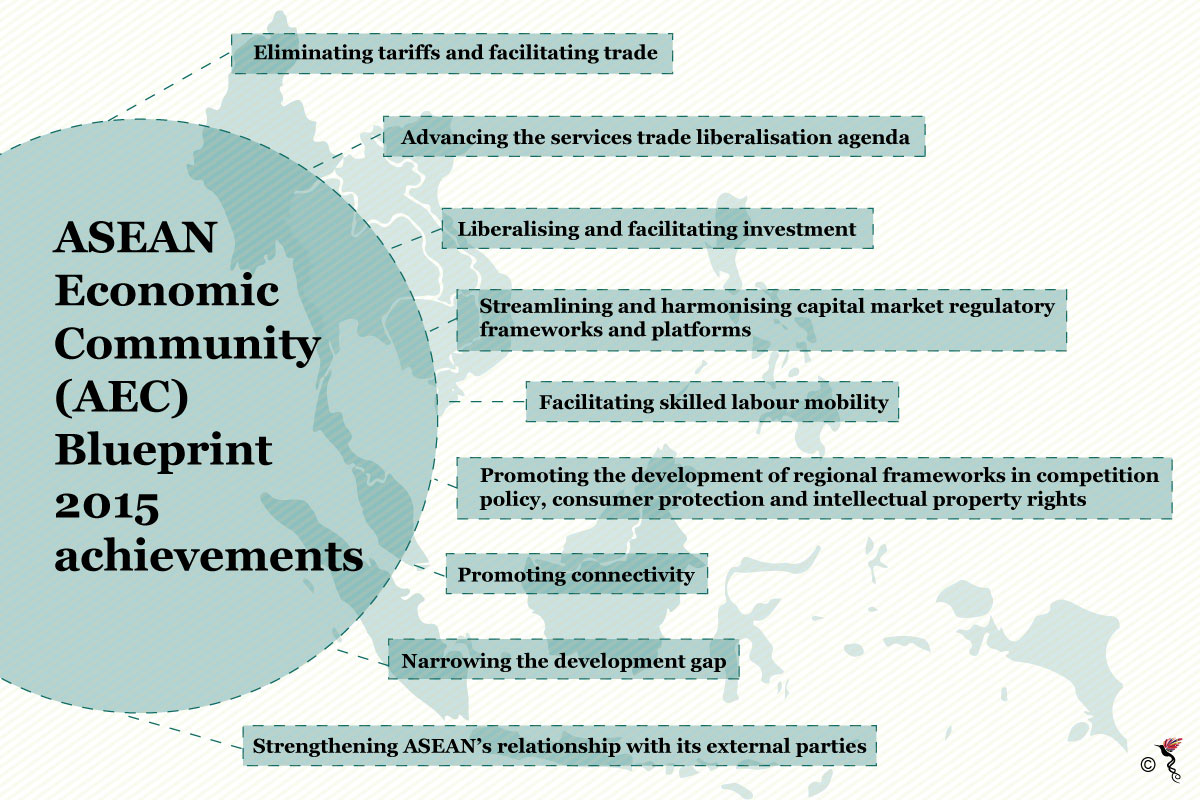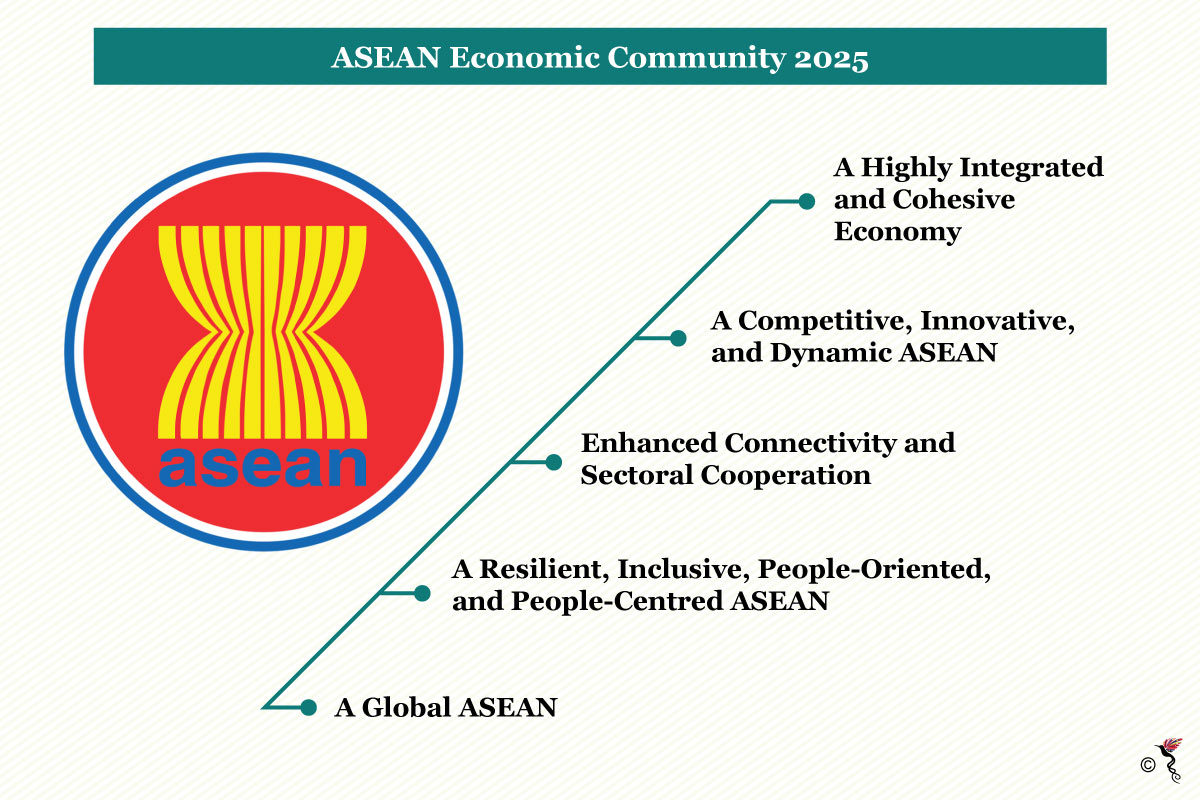Regional integration will be one of the top priorities for Singapore as it assumes the chairmanship of the Association of Southeast Asian Nations (ASEAN) in 2018.

Singapore's ASEAN 2018 chairmanship aspirations
The term “integration” is often thrown around in ASEAN summits and meetings – peppered into speeches made by ASEAN leaders. However, “integration” itself, while easily used to demonstrate an aspiration for a greater regional cohesiveness, is not an easy feat to achieve.
Since the conception of ASEAN 50 years ago, the association has evolved and has moved past its earliest aim of halting the spread of communism in Southeast Asia. Now, the organisation is poised to achieve something greater than the sum of its parts, and the first step is economic integration.
The idea of integrating the economies ASEAN member states makes perfect economic sense. The combined Gross Domestic Product (GDP) stands at 2.53 trillion dollars, with total trade of 2.82 trillion dollars in a region populated by 631 million people.
It is the third largest economy in Asia and sixth largest in the world and it is projected to be the fourth largest by 2040. Average GDP growth for the association has exceeded 5.3 percent for the past 8 years – outdoing global growth. The once insignificant corner of the world has blossomed into a pulsating economic community and premier global trading hub.
To say that the region has developmental potential is stating the obvious. ASEAN has performed remarkably in achieving the goals of the ASEAN Economic Community (AEC) Blueprint 2015.

ASEAN Economic Community 2015 achievements.
But countries in the region cannot grow in silos. Although liberalisation of international trade has opened up many opportunities for ASEAN member states, there are some who are slightly cautious about completely removing trade barriers.
Speaking at a conference in Singapore last month, Former ASEAN Secretary General, Ong Keng Yong when discussing the AEC said that the AEC is of primary importance to the region as the environment for trade liberalisation looks more challenging.
This is why the completion of regional free trade agreements (FTA), most recently the ASEAN-Hong Kong Free FTA are steps in the right direction. Besides that, the Regional Comprehensive Economic Partnership (RCEP) which is still being negotiated, looks to further strengthen ASEAN’s trade relations with its other FTA partners.
However, Ong warned that RCEP will only be successful if ASEAN is on a collectively strong economic footing which can be achieved if member states are committed towards the goals of the AEC.
“Without AEC at its core, RCEP will be meaningless,” Ong said.
The dominant aim of the AEC is ultimately the creation of a single ASEAN market. Seamless movement of goods and services is, after all, the end goal of every free-market loving neoliberal and ASEAN member states are not short in supply of leaders with such economic inclinations.
The AEC 2025, which builds on the previous AEC 2015, demonstrates the aspiration of ASEAN members to work towards realising that vision.

ASEAN Economic Community 2025 goals.
However, ASEAN should be mindful of the implementation of its agenda. According to Pascal Lamy, former Director-General of the World Trade Organization, the AEC 2025 Monitoring and Evaluation (M&E) Framework is vital to ensure proper assessment of the progress of the AEC Blueprint 2025.
“The assessment can benefit from a systematic and well-targeted information dissemination process and mechanism to capture stakeholder feedbacks. Effective monitoring and evaluation can also trigger and promote evidence-based policy changes in ASEAN, in keeping with the shifting global and regional dynamics, and more importantly, the changing needs of the people,” he wrote in an article featured in the AEC Integration Brief published by the ASEAN Secretariat.
Singapore’s chairmanship next year, with its focus on the digital economy and e-commerce, can help boost the prospect of economic integration further. For example, the adoption of the ASEAN Work Program on E-Commerce 2017-2025 can leverage on Singapore’s current digital policy, touted as the best in the region. By synergising the AEC with growing digital ambitions, the possibilities for ASEAN are henceforth, endless.
Recommended stories:
